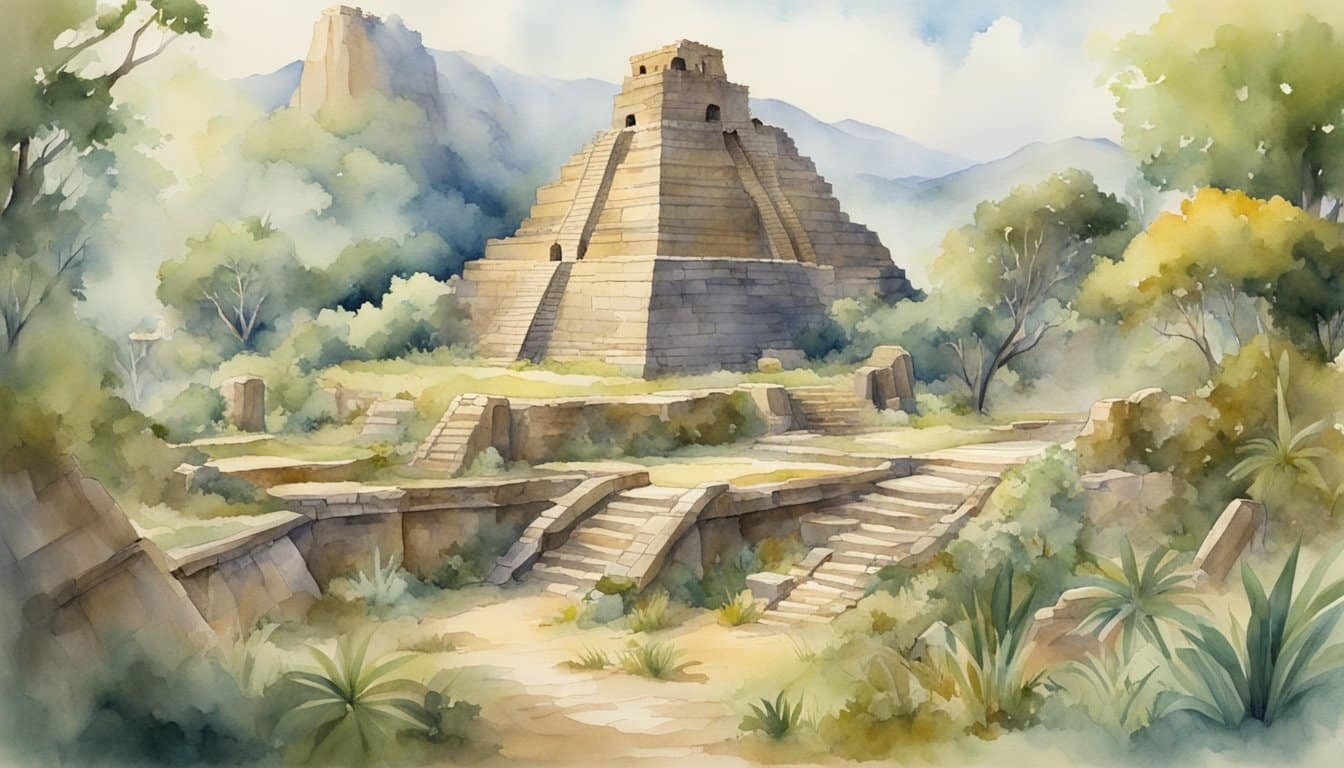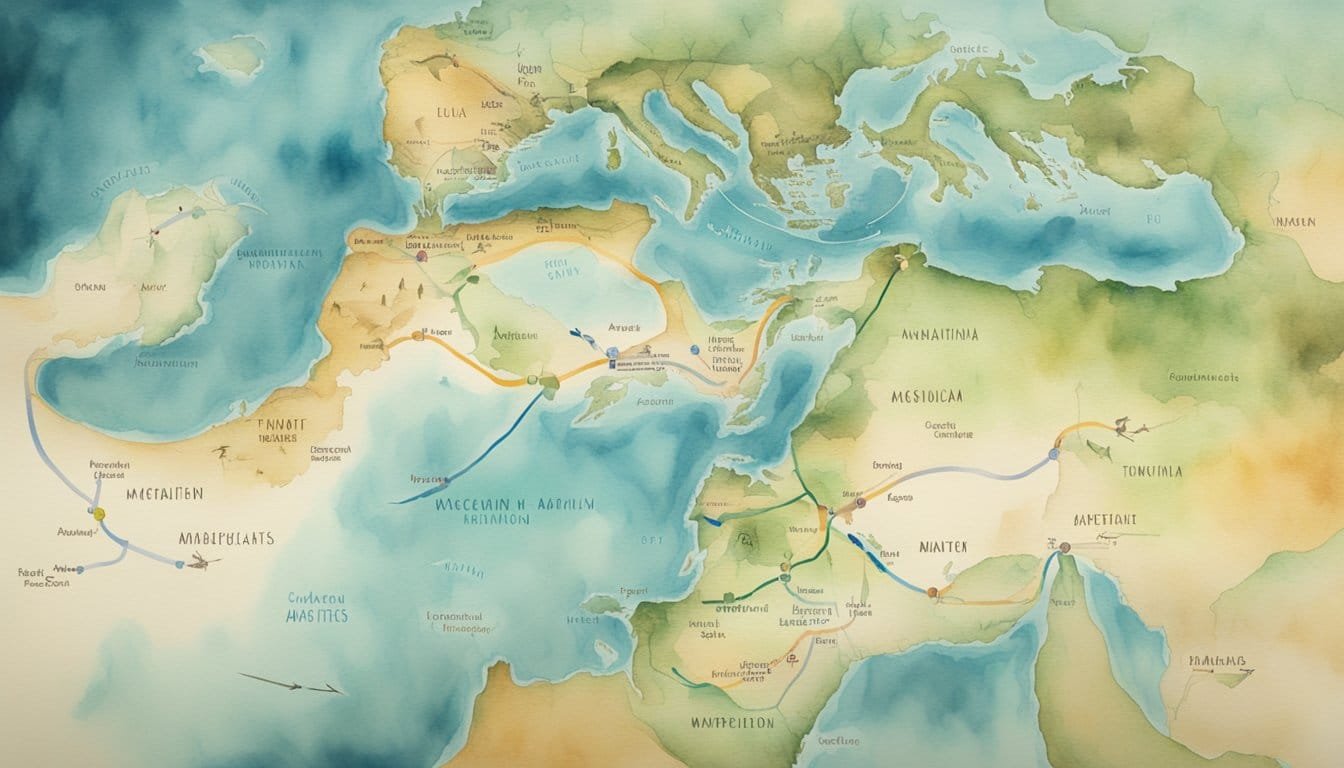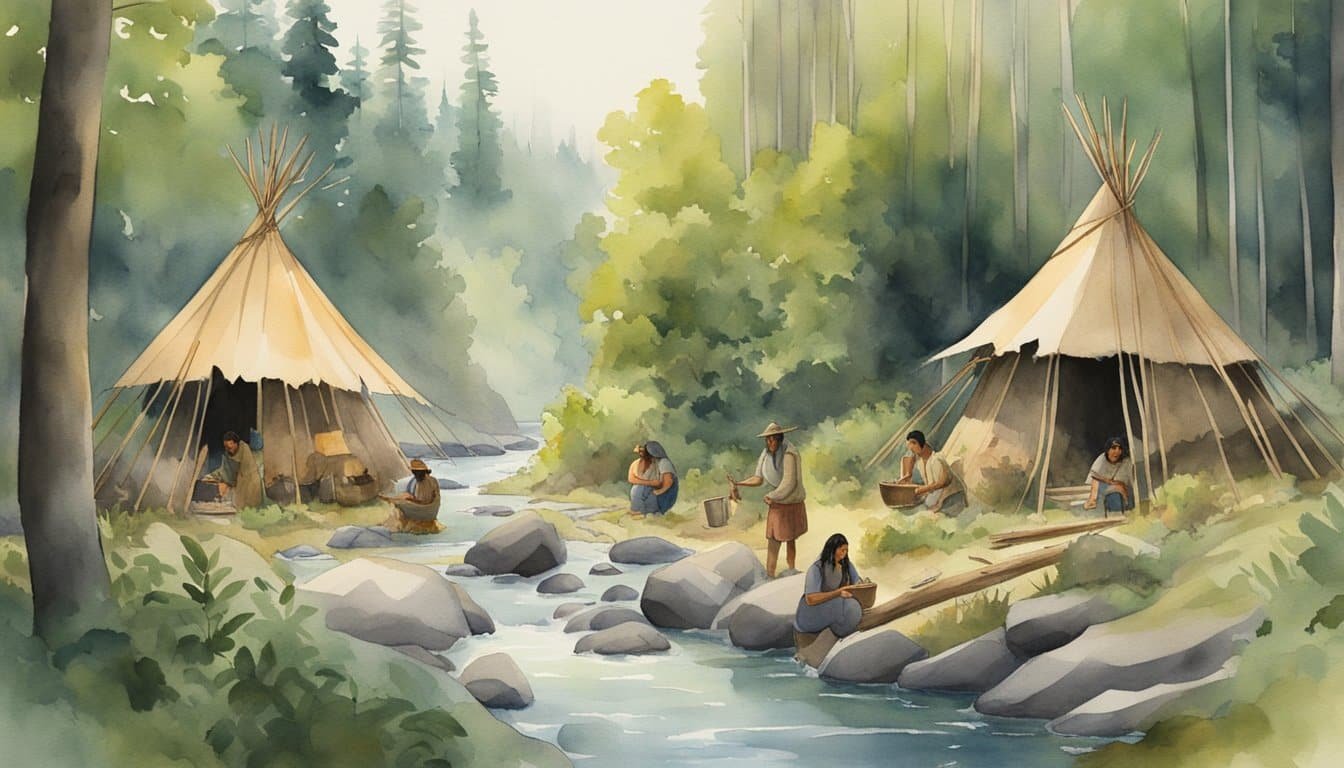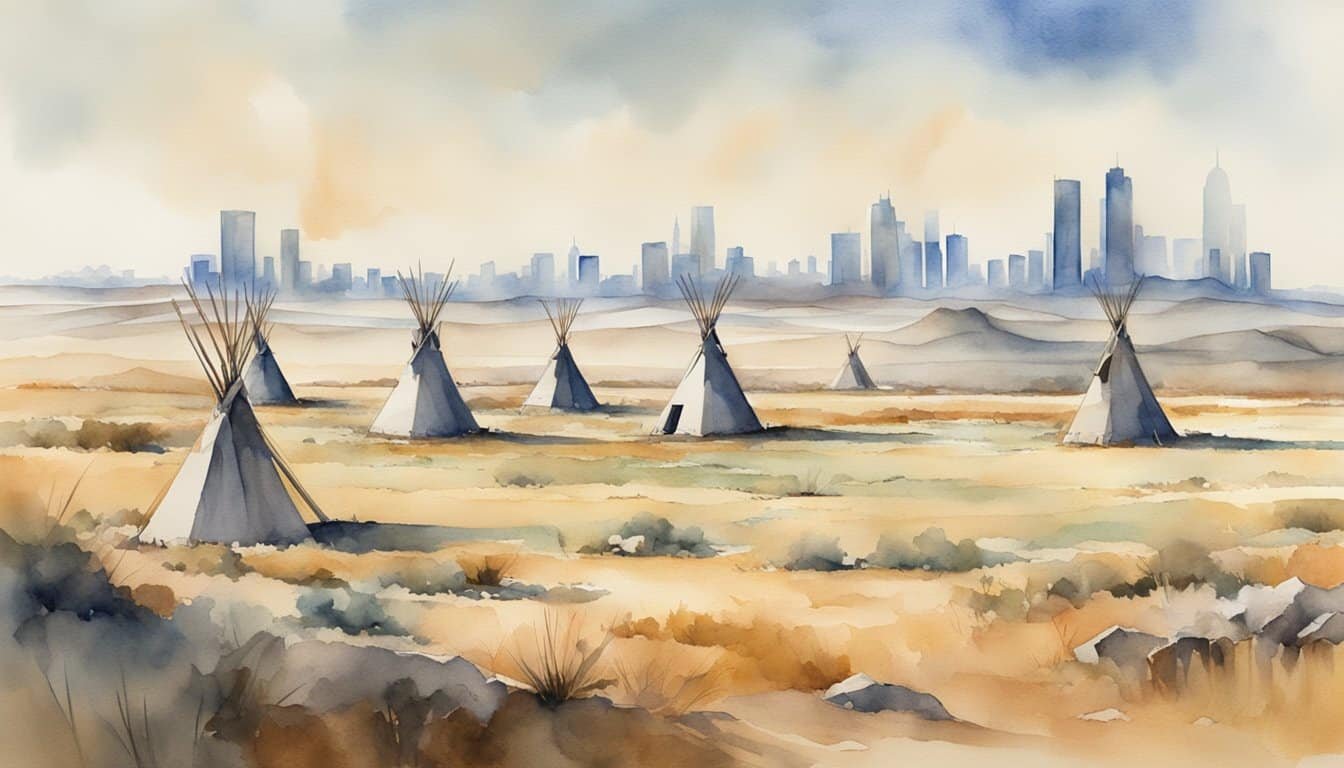Origins of the First Americans
Tracing back the lineage of the First Americans is a journey that winds through an ancient land now submerged, uniting two continents at a time when mammoths roamed a vast, cold world.
Crossing the Bering Land Bridge
During the Ice Age, specifically the Last Glacial Maximum, a strip of land known as Beringia connected northeastern Siberia to western Alaska. This land bridge was exposed due to lower sea levels, creating a route for the earliest Americans from Asia to the Western Hemisphere. The migration across this frozen expanse was no small feat; individuals and groups braved harsh, icy conditions, drawn by the promise of uncharted territory teeming with game.
Early Human Settlements in Alaska
Once across the Bering Land Bridge, the pioneering groups faced new challenges in Alaska. The environment during the Ice Age was formidable, but archaeological finds suggest that these early settlers established themselves in areas where resources were plentiful. Over time, they developed effective ways to thrive, forming the bedrock of the diverse Native American cultures we see today. These initial settlements would eventually spawn further exploration and migration, spreading humanity across the Americas.
Cultural and Archaeological Discoveries

The quest to understand the first inhabitants of the Americas has led to many pivotal discoveries. These findings not only sketch a timeline of human presence but also unveil the rich cultural practices of early populations.
Clovis Culture and Pre-Clovis Evidence
Clovis culture, named after the town of Clovis, New Mexico, is distinguished by its unique stone tools, particularly the fluted spear points that have been found across North America. These artifacts suggest a widespread and technologically savvy group of Paleoamericans who were adept hunters. Archaeological studies have unearthed evidence indicating that Clovis people were present at least 13,500 years ago, thus painting a picture of a sophisticated culture with far-reaching influence.
However, a collection of pre-Clovis tools found in various locations predates these findings. This evidence suggests there were human populations in the Americas earlier than the Clovis culture, challenging the long-held “Clovis First” hypothesis.
Monte Verde: Challenging the Clovis First Theory
The site of Monte Verde, located in southern Chile, dates human presence back at least 18,500 years. This discovery has been crucial in rethinking previous assumptions about how and when people arrived in the Americas. The well-preserved remains of wooden structures and a wide array of plant and animal remains at Monte Verde offer a snapshot of daily life long before the Clovis era, suggesting that first Americans might have taken more diverse routes and developed complex cultures much earlier than once believed.
Genetic Insights and Migration Theories

Genetic research has significantly advanced our understanding of the first Americans. Through the analysis of DNA sequences and mutation rates, geneticists have pieced together the possible routes and timelines that the ancestors of indigenous people may have followed to the Americas.
DNA Sequencing and the Peopling of the Americas
Recent breakthroughs in genetic studies have given scientists the tools to scrutinize ancient human feces and other remains to unearth DNA sequences crucial to our understanding of early American population dynamics. A key focus in this investigation has been on haplotypes, specific groups of genes that are inherited together, which shine a light on the descent and migrations of Paleo-Americans. Studies suggest a single major migration event via a coastal route known as the “kelp highway,” which spanned from Baja California to South America, thanks to the rich marine resources that supported early humans’ southward journey.
Alternative Hypotheses and Genetic Studies
While the kelp highway theory is widely accepted, it’s not without contenders. The Solutrean hypothesis, for instance, proposes a trans-Atlantic crossing from Europe to North America during the last Ice Age, though it lacks robust genetic backing. On the other hand, genetic data from the descendants of Native Americans supports multiple, subsequent migration events. Aside from shaping the current understanding of how the Americas were populated, genetic research also has profound implications for the health and history of today’s indigenous populations, with studies contributing to a deeper comprehension of genetic diversity and disease susceptibility.
Interactions with the Environment

The first Americans forged a dynamic relationship with their surroundings, thriving across varying landscapes and forming unique bonds with the creatures they shared the land with, including the impressive megafauna.
Adaptation to Diverse Ecosystems
As the Ice Age retreated, the first Americans found themselves in a mosaic of diverse ecosystems, each demanding ingenuity for survival. Hunter-gatherers exploited the ice-free corridor, a passage that cut through the retreating glaciers, to access new terrains teeming with resources. Toward the coastlines, they tapped into the abundance of salmon streams, and inland, they gathered seeds and hunted deer, adapting their tools and techniques to the local conditions.
The Role of Megafauna in Early American Life
Retelling the story of the first Americans would be incomplete without the majestic megafauna that roamed the lands. Mammoths and the iconic woolly mammoth featured prominently in this era. These giant beasts provided not just sustenance but also materials for clothing, shelter, and tools. Engaging with these creatures required strategic planning and cooperation, which became a cornerstone of early American societies.
Continuity and Change in Ancient America

Tracing the footprints of the first Americans reveals a story of both continuity and change over thousands of years. From the arrival of ancient hunter-gatherers to their descendants today, this journey showcases how Native American societies evolved while preserving distinct cultural legacies.
From Clovis Points to Complex Societies
Clovis points, named after the site in New Mexico where they were first discovered, symbolize one of the earliest pieces of archaeological evidence of human activity in North America. These sophisticated tools exhibit the ingenuity of early humans in the New World over 13,000 years ago. However, what began with hunting mammoths using these fluted spear points eventually gave way to the rise of complex societies. These societies, which thrived across the Americas, developed diverse cultures with elaborate social structures and advanced agricultural practices.
The Legacy of Native American Cultures
The descendants of the people who navigated the Americas are today’s indigenous people. They carry with them a rich tapestry of cultures that have stood the test of time. Skeletal remains and facial features found across different archaeological sites echo the story of Native Americans‘ adaptation and resilience. Folsom points, for example, suggest a shift in technology and hunting strategies as megafauna dwindled. These cultures shaped, and were shaped by, the landscapes of both South and North America, leaving behind a legacy that transcends centuries, a testament to their enduring presence in a world that has seen profound transformations.

